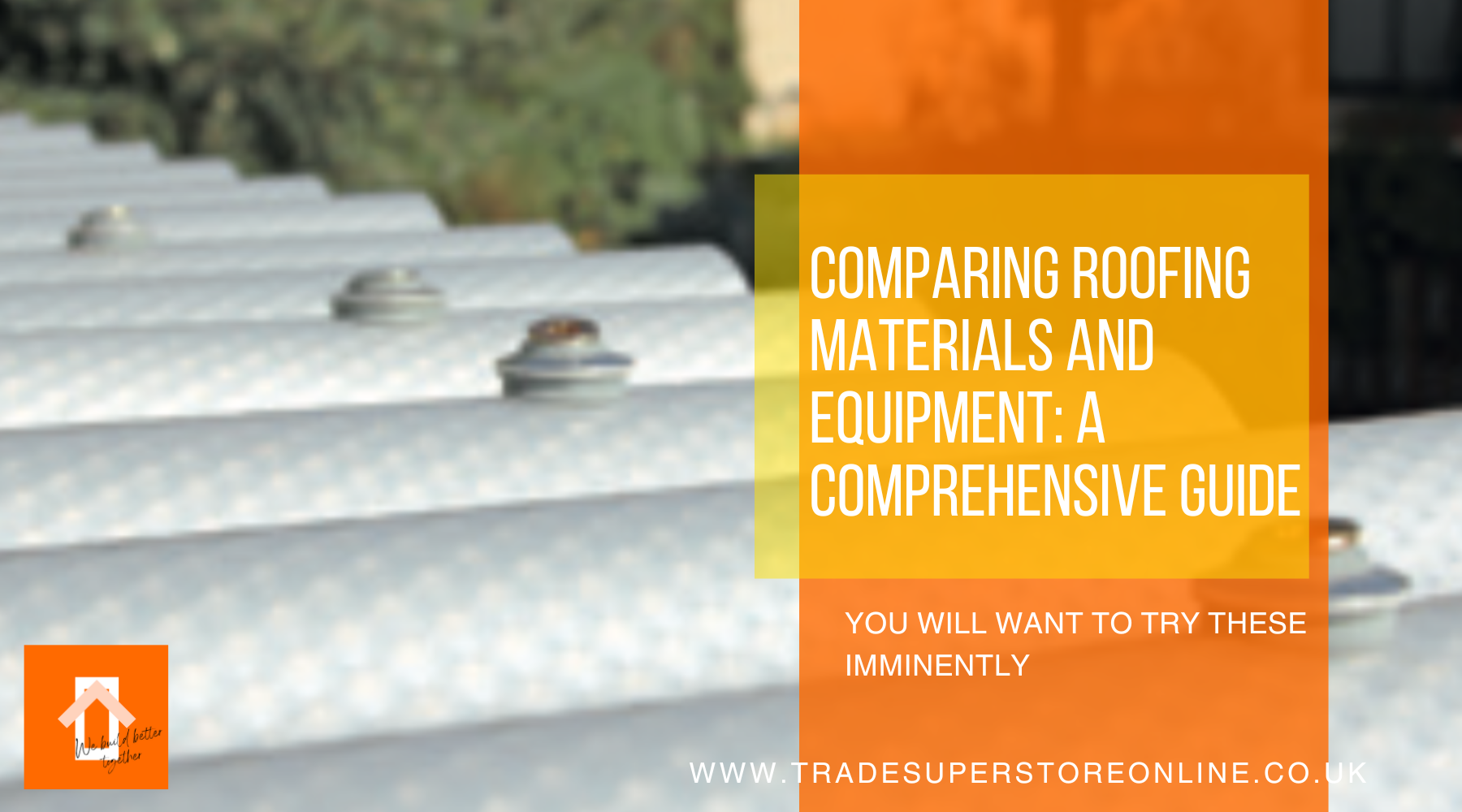
Comparing Roofing Materials and Equipment: A Comprehensive Guide
When it comes to roof renovation, choosing the right roofing materials and equipment is crucial for the success of your project. Whether you’re a DIY enthusiast or hiring professionals, understanding the various options available can help you make informed decisions. In this comprehensive guide, we'll compare different roofing materials and equipment, offer tips for buying roofing materials, and highlight essential roofing supplies for your home improvement project.
Why Choosing the Right Roofing Materials Matters
The roof is one of the most critical components of your home, providing protection against the elements and contributing to your home’s overall aesthetic appeal. Selecting the appropriate roofing materials can enhance durability, energy efficiency, and the appearance of your home. Here are key factors to consider:
- Durability: How well the material withstands weather conditions and time.
- Cost: Initial cost, installation fees, and long-term maintenance expenses.
- Energy Efficiency: The material’s ability to insulate and reflect heat.
- Aesthetic Appeal: How well the material matches your home’s architectural style.
- Maintenance: The effort and cost associated with maintaining the material.

Comparing Roofing Materials
Here’s a breakdown of some of the most popular roofing materials, their pros and cons, and suitable applications.
1. Asphalt Shingles
Pros:
- Affordable and widely available
- Easy to install
- Variety of colors and styles
- Good fire resistance
Cons:
- Shorter lifespan (15-30 years)
- Prone to algae and moss growth
- Can be damaged by high winds
Best For: Most residential homes due to affordability and versatility.
2. Metal Roofing
Pros:
- Extremely durable (40-70 years)
- Fire-resistant
- Reflects heat, improving energy efficiency
- Lightweight and easy to install over existing roofs
Cons:
- Higher initial cost
- Can be noisy during rain or hail
- Potential for denting
Best For: Homes in areas prone to wildfires or heavy snowfall.
3. Clay and Concrete Tiles
Pros:
- Long-lasting (50+ years)
- Excellent fire resistance
- Energy efficient due to thermal properties
- Aesthetic appeal, particularly for Mediterranean or Spanish-style homes
Cons:
- Heavy, requiring reinforced roof structure
- Expensive
- Fragile and can break under impact
Best For: Mediterranean, Spanish, or Southwestern-style homes.

4. Wood Shingles and Shakes
Pros:
- Natural and attractive appearance
- Good insulation properties
- Durable with proper maintenance
Cons:
- High maintenance requirements
- Prone to fire unless treated
- Susceptible to rot and insect damage
Best For: Historic or rustic-style homes.
5. Slate
Pros:
- Very durable (75-100 years)
- Fire-resistant
- Low maintenance
- Attractive and natural appearance
Cons:
- Very expensive
- Heavy, requiring reinforced roof structure
- Complex installation process
Best For: High-end or historic homes seeking a classic, elegant look.
Roofing Equipment Guide
Having the right roofing equipment is just as important as selecting the proper materials. Here’s a guide to essential roofing supplies you’ll need for your project:
-
Safety Gear:
- Hard hats, gloves, and safety glasses
- Harnesses and fall protection systems
- Sturdy footwear with good grip
-
Measuring and Layout Tools:
- Tape measures and chalk lines
- Roofing squares for accurate angles
- Levels to ensure even installation
-
Cutting and Shaping Tools:
- Utility knives and shears for cutting shingles and underlayment
- Circular saws for cutting metal or wood
- Snips for detailed metal work
-
Fastening Tools:
- Nail guns or hammers
- Screws and nails specific to roofing materials
- Staple guns for securing underlayment
-
Ladders and Scaffolding:
- Extension ladders to reach the roof safely
- Scaffolding for stable and secure work platforms
-
Removal and Disposal Tools:
- Shingle removers or roofing tear-off tools
- Dumpsters or disposal bins for old materials
- Heavy-duty tarps to protect landscaping
Tips for Buying Roofing Materials
When buying roofing materials, consider the following tips to ensure you get the best value and quality:
- Research and Compare: Look into different brands and products. Read reviews and compare warranties.
- Consult Professionals: Get advice from roofing contractors or suppliers. They can provide insights based on your specific needs and local climate conditions.
- Check for Local Regulations: Ensure the materials comply with local building codes and regulations.
- Buy Extra: Purchase slightly more material than needed to account for waste and mistakes.
- Quality Over Cost: While budget is important, investing in higher quality materials can save money in the long run through reduced maintenance and longer lifespan.
Conclusion
A successful roof renovation starts with selecting the right roofing materials and equipment. By understanding the pros and cons of different roofing materials and ensuring you have the proper roofing supplies, you can achieve a durable, energy-efficient, and aesthetically pleasing roof. Use this comprehensive guide to navigate the process of buying roofing materials and equipment, ensuring your home improvement project is a resounding success.
